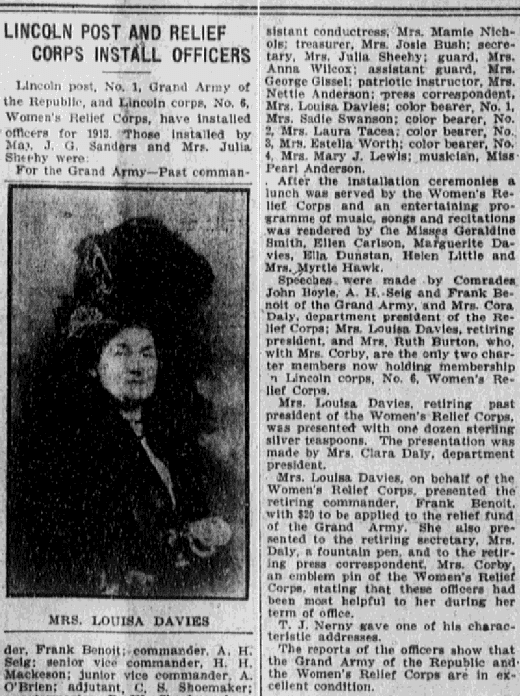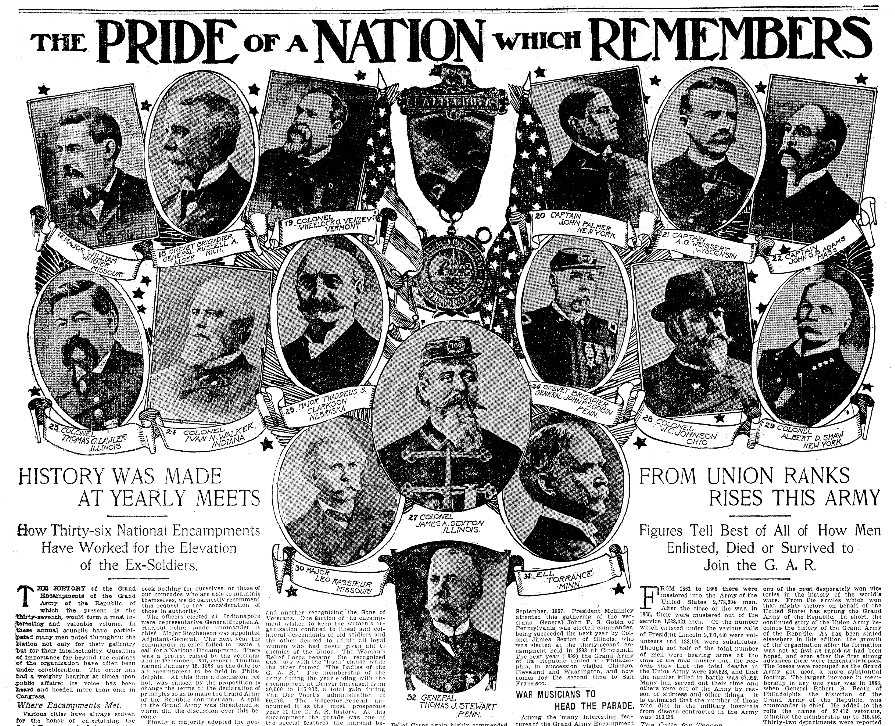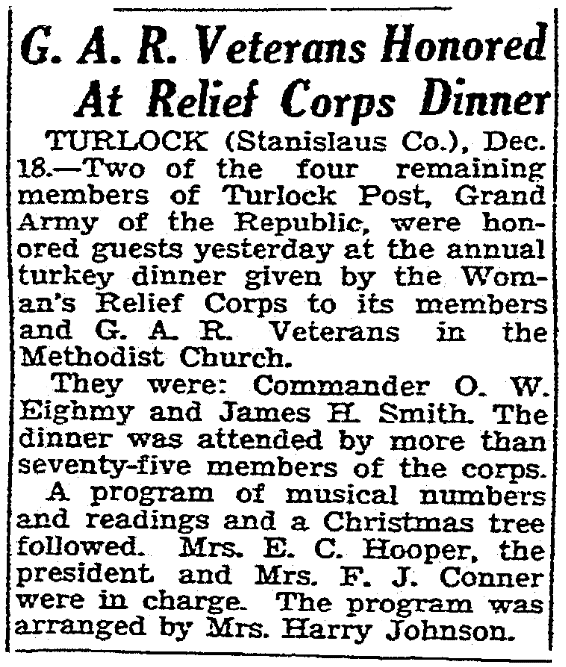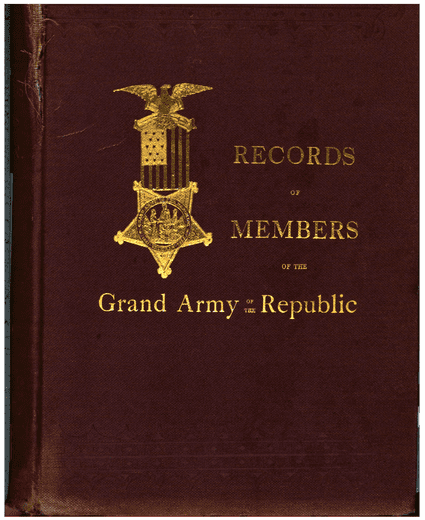Introduction: In this article, Gena Philibert-Ortega provides tips and links to help you research your Civil War Union veteran ancestor. Gena is a genealogist and author of the book “From the Family Kitchen.”
The Grand Army of the Republic (GAR), founded on 6 April 1866, was a fraternal organization that provided Civil War Union veterans a way to stay connected with those they served with during the war. More than two million Union soldiers fought in the war and GAR’s membership reached over 409,000 by 1890. (1) GAR membership was limited to “honorably discharged veterans of the Union Army, Navy, Marine Corps or the Revenue Cutter Service who had served between April 12, 1861, and April 9, 1865.” (2)

Eventually, auxiliary and allied groups joined with the GAR, including those involving women who were related to a Union soldier (Ladies of the Grand Army of the Republic) and those who were not related (Woman’s Relief Corps). In 1881 the Sons of the Union Veterans of the Civil War was founded to succeed the GAR and continue its legacy. The GAR dissolved when its last member passed away in 1956. (3)

Do you have a veteran ancestor who served the Union during the Civil War? If so, here are several tips to help you find more information about him, his service, and his life after the war.
Historical Newspapers
One way to learn more about your ancestor’s Grand Army of the Republic post is to search in his local newspaper, in a collection such as GenealogyBank’s Historical Newspaper Archives. But there are a few things to keep in mind as you search.

First, it’s best to search on the phrase Grand Army of the Republic as an exact phrase, which means adding quote marks (“Grand Army of the Republic”). You can conduct this search in the Keywords box of the GenealogyBank search engine. This will help focus your search on that exact phrase.
Second, be mindful of the newspaper dates in your results list. Articles during the Civil War sometimes referred to the Union Army as the “grand army of the Republic,” predating the membership organization – so don’t get confused by that. You’ll want to narrow your search to articles after 6 April 1866.

Finally, keep in mind that you may not find anything about your ancestor in a newspapers article reporting on the local Grand Army of the Republic. We as researchers don’t just search newspapers for our ancestor’s name; it’s important that we also understand the place, time, and groups they were a member of. Researching any newspaper articles about the Grand Army of the Republic provides genealogists with ideas about what their ancestor was involved in, which can lead to more records and a better understanding of his life that can be used in our family history writings.
National Graves Registration Database
GAR’s continuing legacy can be seen in projects like the Sons of Union Veterans of the Civil War’s genealogically important National Graves Registration Project that seeks to identify every Union soldier’s gravesite and add that information to an online database. You can read more about this effort here and search the free database at the Project’s website. Database information may include a tombstone photo, biographical details, and a “veteran summary” with information about his service and GAR membership.
GAR Records
For genealogists, the benefit of knowing that a family member was a member of the GAR or an auxiliary group goes beyond the benefit of joining a modern-day lineage group like the Sons of Union Veterans of the Civil War or Daughters of Union Veterans of the Civil War. Searching for archival records of your ancestor’s membership group could help you learn more about their life after the Civil War and what they were involved in. One way to do this is to search for archival collections via the catalog ArchiveGrid. In addition, you can search the catalog of the GAR Records Project which documents repositories with GAR records.
Digitized Books
Finally, searching for phrases like “Grand Army of the Republic” or “Woman’s Relief Corps” on Google Books can provide published histories and biographical sketches. One example of what can be found on Google Books is Records of Members of the Grand Army of the Republic (1886).This digitized book includes biographies of members as well as a history of the organization.

Other GAR books found online include those detailing national meetings (encampments) which occurred from 1866 to 1949. These books document the meetings and list organizational officers.
What Do You Know about Your GAR Member?
As you research your Union Civil War veteran ancestor, it’s important to not only seek out any military and pension records, but to learn more about him through membership organizations like the Grand Army of the Republic. Don’t forget to also search for his wife or daughter in the records of the Woman’s Relief Corps or the Ladies of the Grand Army of the Republic. Learning more about your soldier’s life beyond military records can provide you with a clearer picture of his life after the war.
_________________
(1) “Grand Army of the Republic,” Wikipedia (https://en.wikipedia.org/wiki/Grand_Army_of_the_Republic: accessed 7 May 2019).
(2) “About the SUVCW,” Sons of Union Veterans of the Civil War (http://www.suvcw.org/?page_id=6: accessed 7 May 2019).
(3) “Grand Army of the Republic,” Wikipedia (https://en.wikipedia.org/wiki/Grand_Army_of_the_Republic: accessed 7 May 2019).
Related Articles:
